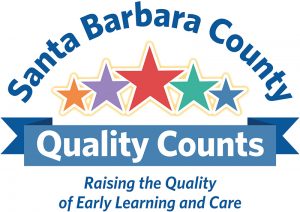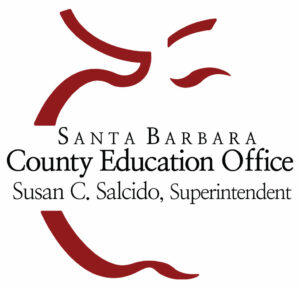About Quality Counts
Preschool and Child Care Quality Counts (Quality Counts) helps parents find quality child care or preschool programs and also gives early care and education programs coaching and support to improve their quality.
Quality Counts is based on California’s Quality Rating and Improvement System (CA-QRIS), which supports and rewards child care providers for offering high-quality care and helps parents understand quality. Participating Quality Counts child care and preschool programs exceed state licensing standards and choose to be evaluated, make improvements, and measure those improvements every year. They achieve a star rating that indicates the level of quality the facility provides for children and families, much like the star ratings given to hotels and restaurants. The standards reflect what we know is good for children and prepares them for school.
PLUS Quality Programs
Quality Counts recognizes several local quality improvement programs which validate and support providers to improve their quality. Recognized programs include: NAEYC Accreditation, NAFCC Accreditation, and Outdoor Classroom Project. Learn more about the PLUS Programs.
How Quality Counts Works
Each participating Quality Counts child care and preschool site is assessed and earns a star rating, ranging from 1 to 5. Ratings are based on what research shows are the key components of quality early care and education, including adult-child interactions, learning environments, and staff qualifications. The standards are high; reaching quality levels is often a long-term process. Ratings are just one of several factors that are important to consider in finding the right child care or preschool program for your family’s needs. Click here for more information about what to look for when searching for care.
What do the Quality Rating Elements Mean?
Programs who choose to participate in Quality Counts have taken an important step in an ongoing effort to improve quality. Points are earned in each of the following elements, which are combined for an overall rating score, ranging from Licensed Quality to Excelling in Quality. This rating makes it easy for parents to identify quality programs, for programs to clearly see areas of improvement and promote their programs’ accomplishments . Child care centers are rated on all 7 elements whereas family based programs are only rated on 5 of the elements because two do not apply. The following information explains the rating elements.
Child Observation measures the program’s use of any assessment, instrument, or tool that measures children’s development. The tools must look at the following developmental domains: physical (gross & fine motor), social-emotional, cognitive, and communication. All of this information about the children is used by teachers in the program to design curriculum to meet the needs of the children in the classroom
Developmental and Health Screenings measures how well the program screens children’s health and how well the program works with families to screen all children. In addition, this element measures how well the program uses the screening results to adapt programming and make sure all children’s needs are met. .
Early Childhood Educator Qualifications measures the lead teachers’ early childhood education level..
Effective Teacher-Child Interactions measures how well the teachers support children’s emotional, language and social development, and the quality of their interactions with children. The Classroom Assessment Scoring System (CLASS) tool is used for this element.
Ratios and group size measures the number of adults to children and the overall number of children enrolled in each classroom.
Program and Environment measures the overall quality of the environment for the children using the Environment Rating Scales (ERS) that considers health and safety, space and furnishings and the materials available for learning activities throughout the day.
Director Qualifications measures the level of early childhood education attained by the program director.
Quality Counts Results
Quality Counts is built on over 18 years of local collaborative quality initiatives in the county. As a result of this work, Santa Barbara County was one of 16 counties selected by the California Department of Education to participate in the state’s federal Race To the Top -Early Learning Challenge grant. This 4.5-year grant, which began in 2012, provided the foundation for Santa Barbara County’s Quality Rating and Improvement System, Quality Counts. The State Department of Education and First 5 California, along with county First 5s and local foundations, continue to fund QRIS programs in Santa Barbara county and across the state, with all 58 counties now involved.
As of July 1, 2020, across Santa Barbara County:
- 138 child care sites (88 centers and 50 family child care homes) are enrolled in Quality Counts and engaged in continuous quality improvement. Of those programs, 77 rated at a tier 4, and 21 at a tier 5.
- Over 4,354 children age birth to 5 years have been served in Quality Counts programs since 2012, many for multiple years, and all with a better chance of being ready for kindergarten.
- 110 of the sites use the Desired Results Developmental Profile (DRDP), a tool developed by the California Department of Education to measure children’s development over time and use that information to plan the daily curriculum. Teachers now observe and track the development of over 3,100 children across the county.
- 66 centers are now nationally accredited by the National Association for the Education of Young Children (NAEYC). In 2002 there were just 7 accredited programs.
- 16 family child care homes are accredited by the National Association of Family Child Care (NAFCC) – up from 6 in 2012.
- 97 child care programs now use the Ages and Stages Questionnaire (ASQ) – up from just 17 programs in 2012. The ASQ tool helps teachers pinpoint children’s developmental progress so that they can identify and address any developmental delays early on. Now over 1600 children are screened each year.



